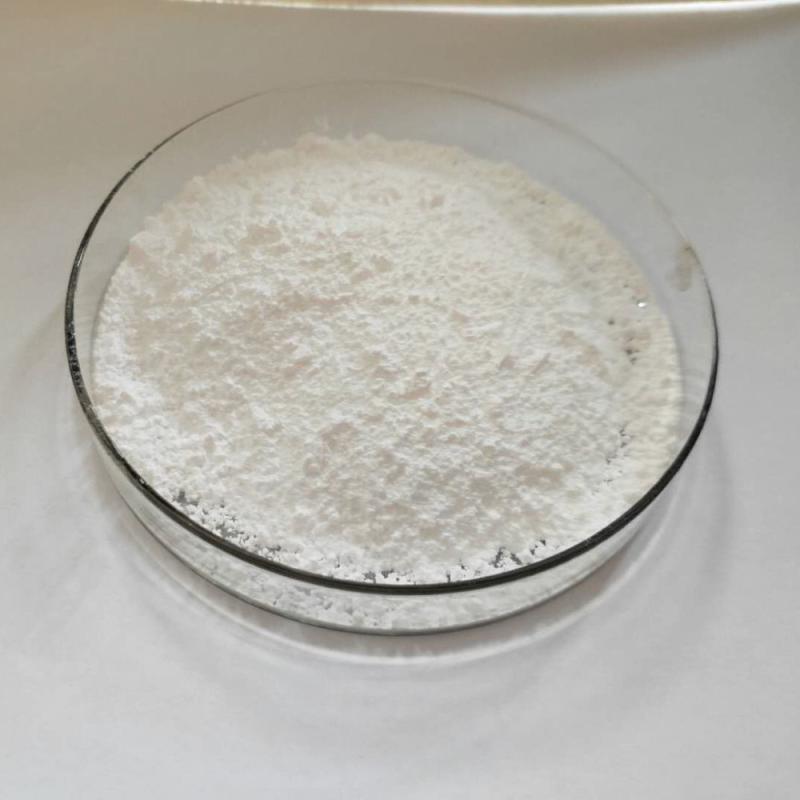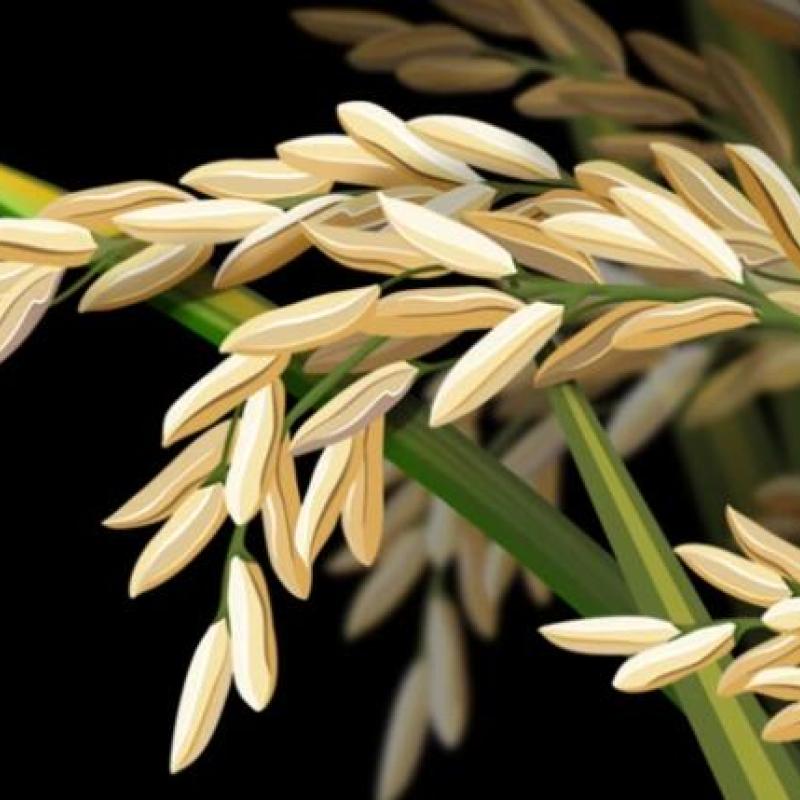Common name: EMAMECTIN-BENZOATEChemical name:(4''R)-4''-DEOXY-4''-(METHYLAMINO)AVERMECTIN B1 BENZOATE Molecular formula: C49H77NO13Structural formula:Molecular weight: 888.13CAS No. : 155569-91-8Product description:Emamectinbenzoate, emamectinbenzoate for short, It is the result of the derivatization study on the hydroxyl group of 4 "-(α -1-zetan fructose-group)-α -1-zetan fructose by Merck in 1984.
Contacta ahora
Product description:emamectinbenzoate, emamectinbenzoate for brief, it is the result of the derivatization observe on the hydroxyl institution of four "-(α -1-zetan fructose-organization)-α -1-zetan fructose with the aid of merck in 1984.
Contacta ahora
Structural formula:Molecular weight: 449.85CAS No. : 91465-08-6Physical and chemical properties:Pure product is white solid, industrial product is light yellow solid. Steam pressure 200×10-9Pa(2.67×10-7Pa)(20℃)Specifications:95%TC, 25%EC, 25%WP, 2.5%EWPacking:25Kg fiber drum or 25 Kg kraft bag.Usage:Pyrethroid is a tactile, gastrotoxic pyrethroid insecticide. Used to control pests on cotton, vegetables, tobacco and other crops.
Contacta ahora
Common name: AzaconazoleChemical name:1-[[2-(2,4-dichlorophenyl)-1,3-dioxolan-2-yl]methyl]-1,2,4-triazole Molecular formula: C12H11Cl2N3O2Structural formula:Molecular weight: 300.1406CAS No. : 60207-31-0Physical and chemical properties:Density: 1.51 g/cm3Melting point: DHS 112.6 CBoiling point: 460.7ºC at 760 mmHgFlash: DHS 232.4 CRefractive index: 1.658Storage conditions: 0-6ºC
Contacta ahora
Chlorfenapyr is converted into lively materials (insecticidal activity) via multifunctional oxidases in bugs. note: multifunctional oxidase mainly plays an important function in the interpretation of pyrethroids, organophosphorus and macrolides.Common name: CHLORFENAPYRChemical name: 4-bromo-2-(4-chlorophenyl)-1-ethoxymethyl-5-trifluoromethylpyrrole-3-carbonitrile Molecular formula: C15H11BrClF3N2OStructural formula:Molecular weight: 407.61CAS No. : 122453-73-0Physical and chemical properties:Pure white solid. M.p.
Contacta ahora
Common name: GlyphosateChemical name: N-(Phosphonomethyl)glycineMolecular formula: C3H8NO5PStructural formula:Molecular weight: 169.07CAS No. : 1071-83-6Physical and chemical properties:The pure product is a white solid. m.p.230℃ (decomposition). It is hardly soluble in general organic solvents; its solubility in water is 1.2% at 25°C. Usually made into glyphosate amine salt, such as isopropylamine salt, dimethylamine salt, etc., can also be made into sodium salt. The glyphosate salt is soluble in water.Product description:Glyphosate is an organophosphorus herbicide.
Contacta ahora
Product description:Bifenthrin is a pyrethroid insecticide. it's far extensively used towards ant infestations, consisting of the invasive pink fireplace ant, by influencing its frightened machine. it has a high toxicity to aquatic organisms.Bifenthrin is poorly soluble in water and often remains in soil. Its residual half-life in soil is between 7 days and 8 months, depending on the soil type, with a low mobility in most soil types. Bifenthrin has the longest known residual time in soil of insecticides currently on the market. It is a white, waxy solid with a faint sweet smell.
Contacta ahora
Bifenthrin is a pyrethroid insecticide. it's miles extensively used in opposition to ant infestations, consisting of the invasive crimson fireplace ant, through influencing its apprehensive machine. it has a high toxicity to aquatic organisms.Bifenthrin is poorly soluble in water and often remains in soil. Its residual half-life in soil is between 7 days and 8 months, depending on the soil type, with a low mobility in most soil types. Bifenthrin has the longest known residual time in soil of insecticides currently on the market. It is a white, waxy solid with a faint sweet smell.
Contacta ahora
Structural formula:Molecular weight: 422.9CAS No. : 82657-04-3Physical and chemical properties:Pure for gray solid. M.p. 68 ~ 70.6℃(industrial M.P. 61 ~ 66℃), relative density 1.210 (25℃), vapor pressure 2.4×10-5Pa, flash point 165℃Content,%≥ 95Product description:Bifenthrin is a pyrethroid insecticide. It is widely used against ant infestations, including the invasive red fire ant, by influencing its nervous system. It has a high toxicity to aquatic organisms.Bifenthrin is poorly soluble in water and often remains in soil.
Contacta ahora
Structural formula:Molecular weight: 416.3CAS No. : 52315-07-8Product description:Cypermethrin (CP) is a synthetic pyrethroid used as an insecticide in large-scale commercial agricultural applications as well as in consumer products for domestic purposes. It behaves as a fast-acting neurotoxin in insects. It is easily degraded on soil and plants but can be effective for weeks when applied to indoor inert surfaces. Exposure to sunlight, water and oxygen will accelerate its decomposition.
Contacta ahora
Product description:Cypermethrin (cp) is a synthetic pyrethroid used as an insecticide in massive-scale business agricultural programs as well as in customer products for domestic functions. it behaves as a fast-performing neurotoxin in bugs. it is easily degraded on soil and plant life however can be effective for weeks while applied to indoor inert surfaces. exposure to daylight, water and oxygen will boost up its decomposition. cypermethrin is fairly toxic to fish, bees and aquatic insects, according to the countrywide pesticides telecommunications network (nptn).
Contacta ahora
Common name: PymetrozineChemical name: (E)-4,5-Fihydro-6-methyl-4-((3-pyridinylmethylene)amino)-1,2,4-triazin-3(2H)-oneMolecular formula: C10H11N5OStructural formula:Molecular weight: 217.23CAS No. : 123312-89-0Product description:Pymetrozine belongs to the pyridine (pyridinethimide) or triazinone class of insecticides and is a non - cytocytic insecticide. Pymetrozine has a tactile effect on insect pests and internal absorption activity. In plants, it can transport in both xylem and phloem. Therefore, it can be used as foliar spray and soil treatment.
Contacta ahora
Product Description:Pymetrozine is a non - cellular insecticide belonging to pyridinethimide or triazinone pesticide. Pymetrozine has tactile and endogenic activity to pests. In vegetation, it may be transported in every xylem and phloem. Therefore, it can be used as a foliar spray and soil remediation agent. Due to its correct transfer properties, newly grown branches can also be effectively covered after spraying stems and leaves.Common name: PymetrozineChemical name: (E)-4,5-Fihydro-6-methyl-4-((3-pyridinylmethylene)amino)-1,2,4-triazin-3(2H)-oneMolecular form
Contacta ahora
Common name: DicambaChemical name:3,6-Dichloro-2-methoxybenzoic acidMolecular formula: C8H6Cl2O3Structural formula:Molecular weight: 221.04CAS No. : 1918-00-9 Physical and chemical properties:The pure product is white crystal, m.p. 114~116℃, flash point 150℃, decomposes at 200℃, relative density 1.57 (25℃), vapor pressure 0.5Pa (100℃). Solubility at 25°C: 922g/L ethanol, 760g/L isopropanol, 810g/L acetone, 130g/L toluene, 260g/L dichloromethane, 1180g/L dioxane, 6.5g/L water.
Contacta ahora
Common name: ametrynChemical name:N-ethyl-N’-(1-methylethyl)-6-(methylthio)-1,3,5-triazine-2,4-diamineMolecular formula: C9H17N5SStructural formula:Molecular weight: 227.33CAS No. : 834-12-8Physical and chemical properties:White crystalline solid. m.p. 80~84℃ (recrystallized in petroleum ether), density 1.19g/m3, vapor pressure 1.12×10-4Pa. The solubility is: acetone 500g/ChemicalbookL, methanol 450g/L, toluene 400g/L, water 18.5mg/L. It is stable in slightly acidic or slightly alkaline medium, and easily hydrolyzed in strong acid or strong alkaline medium.
Contacta ahora
Common name: AtrazineChemical name:2-Chloro-4-ethylamino-6-isopropylamino-1,3,5-triazine; 2-chloro-4-ethylamino-6-isopropylamino-s-triazine; Molecular formula: C8H14ClN5Structural formula:Molecular weight: 215.68CAS No. : 1912-24-9Physical and chemical properties:Atrazine is a colorless crystal with a melting point of 173~175°C. Dissolved in water, methanol and chloroform. It is stable in neutral, slightly acidic and slightly alkaline media, but alkali and inorganic acid can hydrolyze it into hydroxy derivatives without herbicidal activity at high temperature, and it is non-corrosive.
Contacta ahora
Common name: AcetamipridChemical name: N-[(6-chloro-3-pyridyl)methyl]-N'-cyano-N-methyl-acetamidineMolecular formula: C10H11ClN4Structural formula:Molecular weight: 222.67CAS No. : 135410-20-7Physical and chemical properties:Acetamiprid raw drug is white crystal, content of more than 99%, melting point of 101 ~ 103.3℃, vapor pressure < 0.33×10-6Pa(25℃), slightly soluble in water, solubility in water is 4.2g/L, soluble in acetone, methanol, ethanol, dichloromethane, chloroform, acetonitrile, etc.
Contacta ahora
Chemical formula: C6H12N2S4Molecular weight: 240.433CAS no. : 137-26-8 Chemical properties:Pure product is colorless crystal, no smell. M.p. 155 ~ 156℃, relative density 1.29. Easily soluble in benzene, chloroform (230g/L), acetone (80g/L, Chemicalbook carbon disulphide and other organic solvents, slightly soluble in ether and ethanol (& LT; 10g/L), insoluble in water (30mg/L). It breaks down in acid. Industrial product is white or light yellow powder, M.P.
Contacta ahora
Structural formula:· Molecular weight: 255.66· CAS No. : 105827-78-9Physical and chemical properties:Pure product is white crystal, M.P. 143.8℃ (A), 136.4℃ (B), vapor pressure 2×10-7Pa (20℃)Specifications:97%TC, 25%WP, 10%WP, 70%WP, 35%SC, 60%FCProduct description:Imidacloprid is a systemic insecticide belonging to a class of chemicals called the neonicotinoids which act on the central nervous system of insects. The chemical works by interfering with the transmission of stimuli in the insect nervous system.
Contacta ahora
Common name: Terbutryn Chemical name:N-(1,1-dimethylethyl)-N’-ethyl-6-(methylthio)-1,3,5-triazine-2,4-diamine; Saterb; PrebaneMolecular formula: C10H19N5SStructural formula:Molecular weight: 241.36CAS No. : 886-50-0Physical and chemical properties:This product is white powder. m.p.104~105℃, vapor pressure 0.128×10-3Pa (20℃). It is easily soluble in organic solvents such as isopropanol and xylene. The solubility in water at 20°C is 58mg/L.
Contacta ahora
Common name: 2,4-DChemical name:2,4-dichlorophenoxy-acetic acid; (2,4-dichlorophenoxy)acetic acid; Acetic acid, 2-(2,4-dichlorophenoxy)-Molecular formula: C8H6Cl2O3Structural formula: Molecular weight: 221.04CAS No. : 94-75-7Physical and chemical properties:White crystals. Melting point is 138°C, boiling point is 160°C (53Pa). Soluble in organic solvents such as ethanol, acetone, ether and benzene, but insoluble in water. Rat oral LD50375mg/kg.Usage:Used as plant growth regulator, antiseptic and fresh-keeping agent. It can be used in compatibility with other disinfectants.
Contacta ahora
Common name: Clodinafop-propargylChemical name:2-propynyl-(R)-2-[4-(5-chloro-3-fluoro-2-pyridyloxy)phenoxyl]-prpionateMolecular formula: C17H13ClFNO4Structural formula: Molecular weight: 349.74CAS No.
Contacta ahora
Common name: Lambda-cyhalothric acidChemical name:(1RS)-cis-3-(Z)-(2-chloro-3,3,3-trifluoroprop-1-enyl)-2,2-dimethylcyclopropanecarboxylic acidMolecular formula: C9H10ClF3O2Structural formula: Molecular weight: 242.62CAS No.
Contacta ahora
Product description:Internal carbamate insecticide, both pesticide and stomach toxicity, can successfully manipulate a ramification of pests and their larvae and eggs, the residual impact is brief. manipulate cotton bollworm, cotton miner moth, tobacco moth with 24% water spray 24-36ml /100m2. foliar spray also can be used to manipulate aphids, thrips, red spider, leaf roll worms, slime worms, and so on., and soil remedy to control nematodes and leaf pests. in 1966, it changed into first endorsed by way of du pont as insecticide and nematocide.
Contacta ahora


































